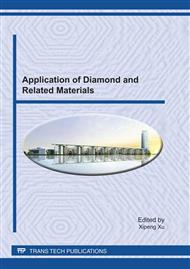p.316
p.321
p.326
p.330
p.335
p.342
p.347
p.352
p.357
A Mathematical Modeling Method for Capillary Limit of Micro Heat Pipe with Sintered Wick
Abstract:
With heat flux increasing and cooling space decreasing in microelectronic and chemical products, micro heat pipe has become an ideal heat dissipation device in high heat-flux products. Through the analysis of its working principle, the factors that affect its heat transfer limits and the patterns in which copper powders are arrayed in circular cavity, this paper first established a mathematical model for the crucial factors in affecting heat transfer limits in a circular micro heat pipe with a sintered wick, i.e. a theoretical model for capillary limit, and then verified its validity through experimental investigations. The study lays a powerful theoretical foundation for designing and manufacturing circular micro heat pipes with sintered wicks.
Info:
Periodical:
Pages:
335-341
Citation:
Online since:
June 2011
Authors:
Keywords:
Price:
Сopyright:
© 2011 Trans Tech Publications Ltd. All Rights Reserved
Share:
Citation:


